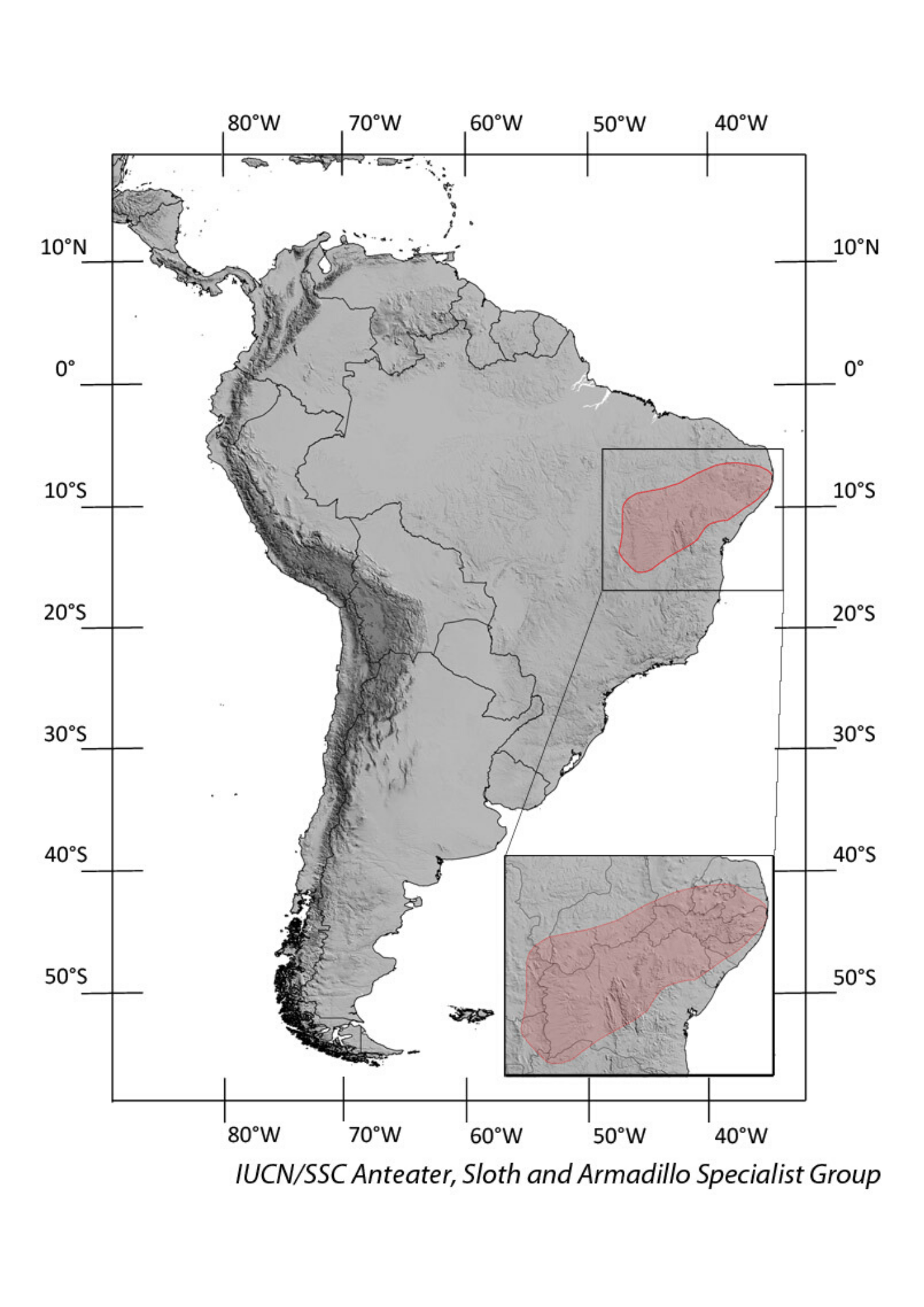Brazilian three-banded armadillo
(Tolypeutes tricinctus)
other common names
Taxonomy
Order: Cingulata
Family: Chlamyphoridae
Subfamily: Tolypeutinae


description
The Brazilian three-banded armadillo has a head-body length of 23–25 cm and weight around 1–1.8 kg. The dome-shaped, sandy yellow to brown carapace is rigid and has 2 to 4 movable bands. The tail, as well as the head shield, are triangular in shape. When the animal rolls up, the head and tail shields fit flush with the surrounding carapace to form a perfect ball. There are five clawed toes on the forefeet, with the third claw being the largest.

diet
This insectivorous species mainly feeds on ants, termites, beetles and other insects, but it may also ingest some plant material.

range
This species is endemic to northeastern Brazil.

Population trend
Decreasing.

reproduction
The Brazilian three-banded armadillo produces one, rarely two, young per litter.

conservation status
Tolypeutes tricinctus is listed as Vulnerable under criterion A2cd because of a population decline—estimated to be more than 30% over the last 10-15 years—inferred from ongoing exploitation and habitat loss and degradation. However, a recent reassessment at the national level in Brazil categorized this species as Endangered under criterion A2cd.

threats
Tolypeutes tricinctus is threatened by heavy hunting pressure and habitat loss. In the Caatinga, the remaining populations are practically isolated in protected areas and are subjected to subsistence hunting. In the Cerrado, the main populations live outside protected areas and are especially threatened by conversion of their natural habitat to sugar cane and soybean plantations.

HaBITAT and ECOLOGy
Tolypeutes tricinctus was believed to be extinct until its rediscovery in 1988 in a handful of scattered localities. It has probably disappeared over much of its range, but it is difficult to survey its populations. It mainly occurs in Caatinga habitat (dry thorn scrub of north-eastern Brazil), but it is also found in the eastern parts of Cerrado habitat (bush savanna in central Brazil). Significant habitat loss has been recorded in its range, especially in the Cerrado. This armadillo has a patchy distribution; population densities may be relatively high within certain patches, except in areas where the species is exposed to human pressure. Population density has been estimated at 1.2 animals per km² in the Cerrado, but is expected to be considerably lower in areas with hunting pressure. In a study near Jaborandi (Bahia), the mean home range was estimated at 122 hectares, with adult males having significantly larger home ranges (238 hectares) than females. The home ranges of males and females, as well as of adult males of varying age, may overlap. There are no direct data on wild individuals to be able to estimate generation length for T. tricinctus. There are no direct data from wild individuals to estimate the generation length of T. tricinctus. However, based on data of captive individuals of its congener (T. matacus), the generation length is estimated to be approximately 5 years.

curious facts
When threatened, the Brazilian three-banded armadillo has the habit of rolling into a ball. Although this is a behavior commonly attributed to armadillos, only the two species of Tolypeutes are capable of curling up into a perfect ball that cannot be opened by its predators.